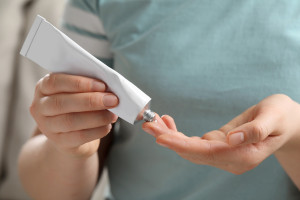Banned in Switzerland and Germany. Widely used in Poland

Author: prepared by JKB • Source: Rynek Zdrowia • Published: 05 June 2025 16:57 • Updated: 05 June 2025 16:57
Allura Red AC (E129) is an intense red synthetic dye, widely used in food products, cosmetics and medicines. Although in many countries, including the European Union, its use is permitted under certain conditions, in some countries - such as Norway and Switzerland - it has been banned due to its potential health effects. You will find it in carbonated drinks, jelly, dairy desserts, as well as in tablets and lipsticks.
- Allura red (E129) is used as a food coloring
- In the pharmaceutical industry it is used, among others, in the production of syrups or tablets.
- E129 is also one of four red dyes that, when combined with the preservative E211 (sodium benzoate), may cause hyperactivity in children.
Doz.pl explains that allura red is an organic dye of synthetic origin and is used to obtain the red color of selected products. This dye can be found in food products as E129, and in cosmetics as Allura Red or CI 16035.
Allura red in solutions takes on colors from red to brown. Most often, this red dye is extremely popular in the food industry. E129 can be found in:
- confectionery products (sugar masses, icings, decorations, jams, jellies),
- candies,
- yogurts,
- ready-made desserts,
- sauces and dips,
- alcoholic and non-alcoholic beverages,
- juices and nectars,
- meat and meat products.
In the pharmaceutical industry, allura red is used as an excipient in the production of syrups or to colour the outer coatings of drugs and dietary supplements sold in the form of dragees or capsules.
E129 is used for colouring:
- personal hygiene products (shower gels or shampoos),
- colour cosmetics intended for make-up,
- hair dyes,
- tattoo pigments.
Due to the fact that allura red is approved for use in the food, cosmetics and pharmaceutical industries, this dye is relatively safe. However, as Doz.pl reminds us, it can cause side effects.
In this case, it is, for example, the exacerbation of symptoms of salicylate intolerance or asthma. Interestingly, depending on the source, it is considered a carcinogenic factor or defined as not causing cancer processes in human organisms.
E129 is also one of four red dyes that, when combined with the preservative E211 (sodium benzoate), can cause hyperactivity in children. This has led to E129 being banned from food production in countries such as France, Germany, Belgium , Denmark, and Switzerland, and in many countries, products containing this dye must have information on the label about the possibility of a negative impact on children's activity and attention span - Doz.pl lists.
It can also cause hay fever, cough, concentration problems, and – as some studies show – in extreme cases, increase the risk of cancer.
Maximum levels of allura red in food products according to EFSA guidelines:
- soft drinks up to 100 mg/L,
- alcoholic beverages up to 200 mg/L,
- canned meat up to 25 mg/kg,
- processed cheese, salty snacks, smoked fish up to 100 mg/kg,
- ice cream and dairy desserts up to 150 mg/kg,
- confectionery up to 200 mg/kg,
- sauces, dips up to 500 mg/kg.
Copyrighted material - reprint rules are specified in the regulations .
rynekzdrowia










